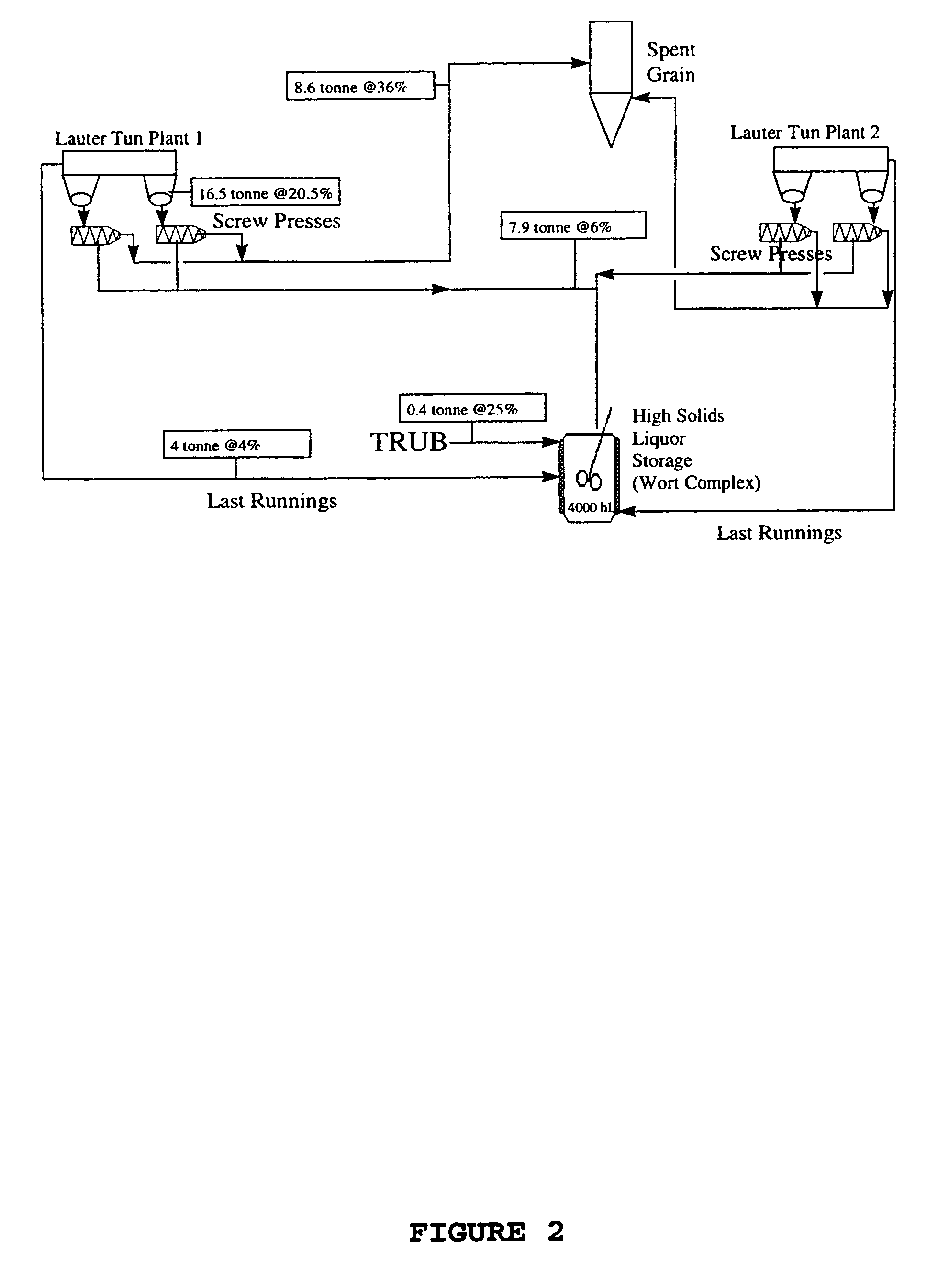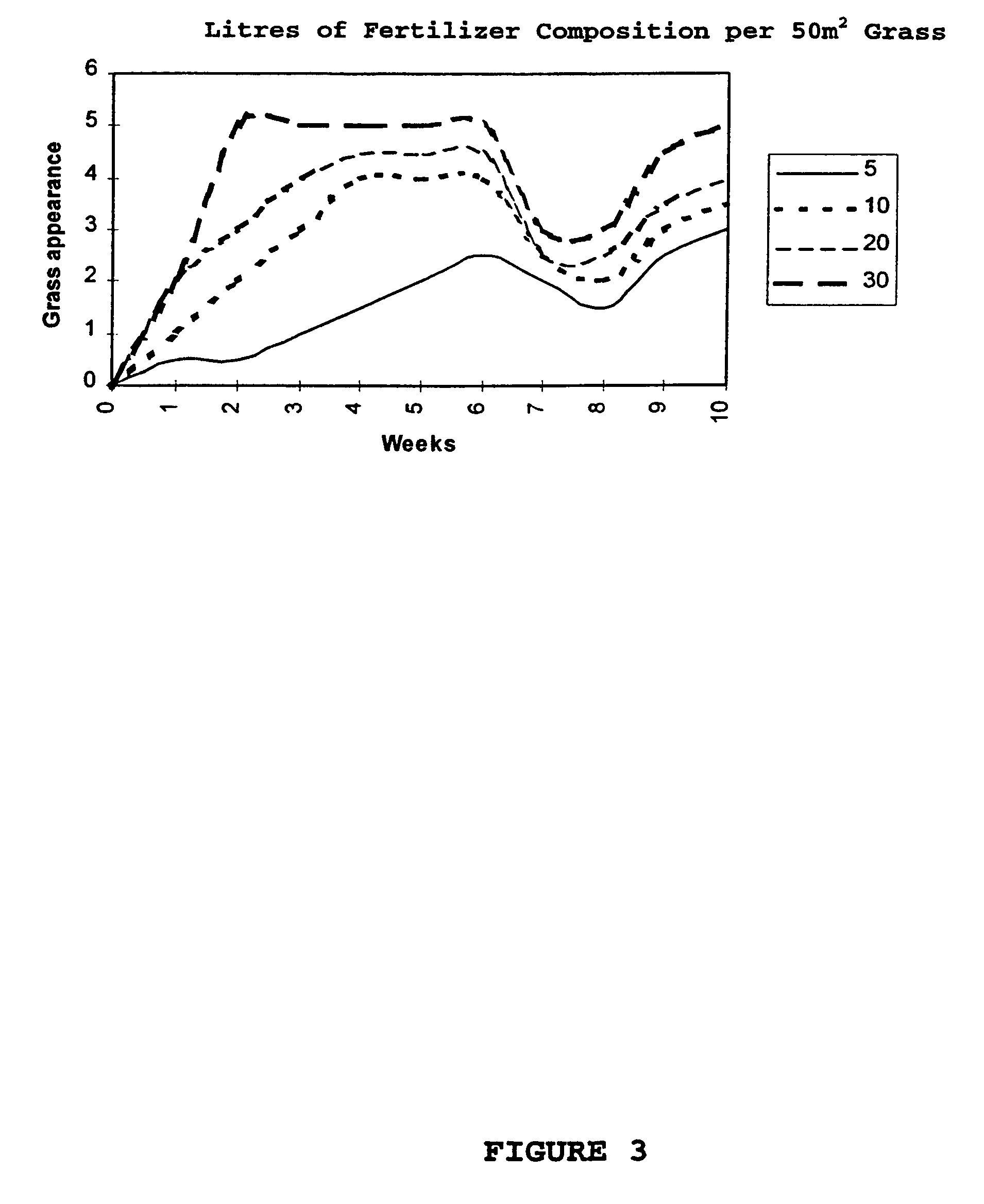Malt extract or spent grain liquor based fertilizer
a technology of malt extract and fertilizer, which is applied in the direction of liquid fertilisers, bioloigcal waste fertilisers, agriculture, etc., can solve the problems of degradation of the natural environment, affecting the yield of traditional agricultural land, and overuse of chemical fertilizers, so as to enhance the suppressive character of soil, combat the spread and pathogenicity of fungi, and enhance the effect of
- Summary
- Abstract
- Description
- Claims
- Application Information
AI Technical Summary
Benefits of technology
Problems solved by technology
Method used
Image
Examples
example 1
Recovery of Spent Grain Liquor to be Used as a Fertilizer Composition
[0086]Malt was milled and extracted with hot water in the usual way for beer brewing. This step relies on endogenous enzyme activity of the malt to break down starch into monosaccharides and dextrins. Insoluble material, including the spent grain, was separated from the Wort extract by filtration using a Lauter tun.
[0087]A number of processes exist for de-watering of spent grain; however the importance of the insoluble phase in the final fertilizer required that the process selected did not over clarify the product. De-cantering was very effective in de-watering the spent grain from 20 to 35% w / w; however the clarified liquid product which resulted was less effective then desired. Accordingly, we investigated other means, and found that the most effective equipment for de-watering the spent grain liquor without reducing the residual insoluble material was a screw press.
[0088]The screw press used consisted of a scre...
example 2
Powdered Fertilizer Composition
[0092]While we believed that the liquid suspension fertilizer composition from Example 1 was extremely useful, we considered that its shortened shelf-life, and dilute nature may adversely affect its commercial success. Indeed, we considered that the most convenient form for most applications of this product would be as a powder. Accordingly, in order to improve the shelf-life, and volume of the fertilizer composition suspension from Example 1, we undertook tests to ascertain whether the removal of significant quantities of liquid could be achieved without losing efficacy of the fertilizer composition.
[0093]Commercial drying is one of the least cost effective methods of removing liquid. In general, removal of liquid in industrial processes is by mechanical means. However, we felt that both the soluble phase and insoluble phases of the by-product streams were required for the fertilizer composition of the present invention. Accordingly, we tried to avoid...
example 3
Yeast Extract and Yeast Cell Wall Preparation
[0102]As discussed above, the fertilizer compositions described in Examples 1 and 2 may be supplemented with yeast extract. Commercially available yeast extract preparations may be used; however, suitable yeast extract was also produced by the following methods.
[0103]Yeast suspensions were adjusted to pH 12 with an appropriate amount of concentrated HCl or NaOH solution. Chloroform (3% v / v final) was added, and the volume was adjusted to give a packed cell volume of 200 ml / L. The mixture was then agitated and heated to 45–50° C. for 24 hours. The soluble material was recovered by centrifugation at 5,000 g for 10 min. Other suitable means could be used, for example, filtration. The recovered material was then spray dried directly, or concentrated using a surface swept evaporator before spray drying. Alternatively, the entire suspension after the heating step was dried.
[0104]Washed yeast suspensions were also prepared by adjusting to pH 9 a...
PUM
| Property | Measurement | Unit |
|---|---|---|
| diameter | aaaaa | aaaaa |
| viscosity | aaaaa | aaaaa |
| temperatures | aaaaa | aaaaa |
Abstract
Description
Claims
Application Information
 Login to View More
Login to View More - R&D
- Intellectual Property
- Life Sciences
- Materials
- Tech Scout
- Unparalleled Data Quality
- Higher Quality Content
- 60% Fewer Hallucinations
Browse by: Latest US Patents, China's latest patents, Technical Efficacy Thesaurus, Application Domain, Technology Topic, Popular Technical Reports.
© 2025 PatSnap. All rights reserved.Legal|Privacy policy|Modern Slavery Act Transparency Statement|Sitemap|About US| Contact US: help@patsnap.com



